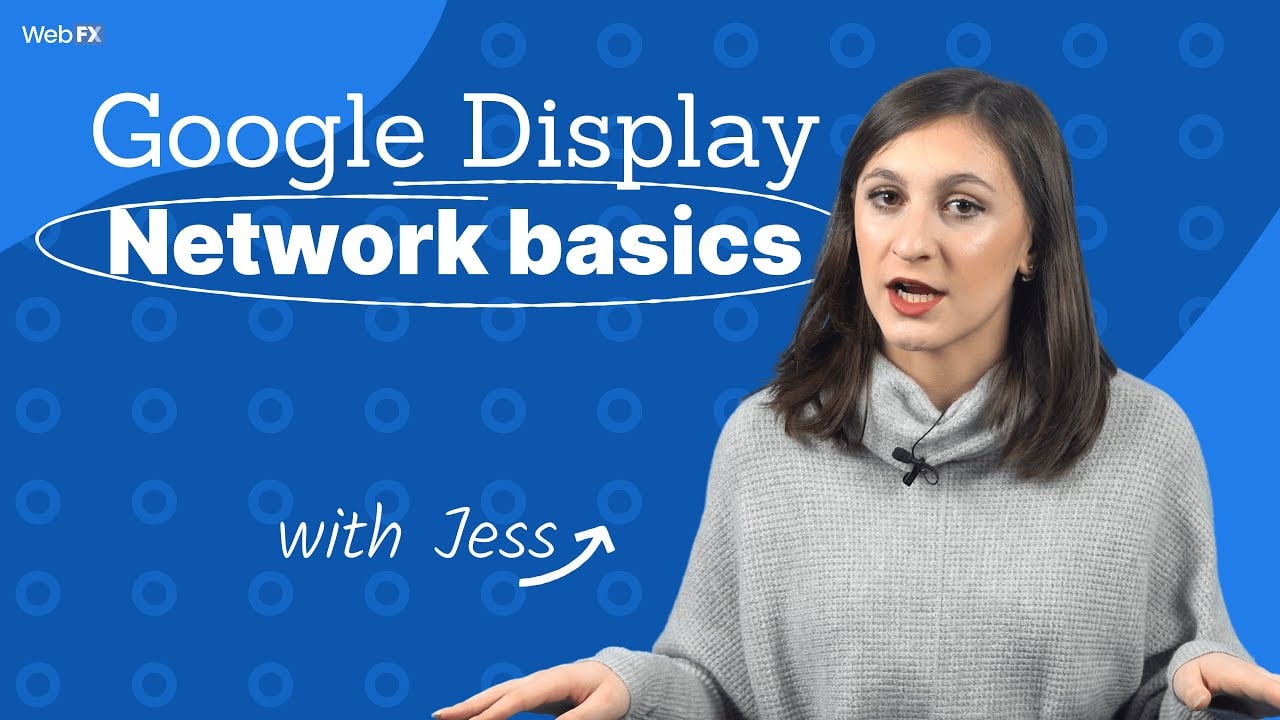Do you ever wonder how Google manages to show you those perfectly tailored ads? It’s all thanks to the powerful GoogleDisplayNetwork.
This revolutionary platform has combined standard and Smart Display campaigns into one, unleashing the full potential of machine learning for targeted advertising. With a wide array of ad types and responsive designs, businesses can now engage with customers at an earlier stage, reach a wider audience, and do it all affordably.
But that’s not all – GoogleDisplayNetwork offers various targeting options like placement and remarketing, along with optimization based on devices, demographics, and content exclusions. Get ready to dive into the world of precision advertising with GoogleDisplay Network!
Table of Contents
- google display network
- 1. Overview Of Google Display Network
- 2. Benefits Of Display Campaigns On The Google Display Network
- 3. Leveraging Machine Learning In Display Campaigns
- 4. Maximizing Conversions With Smart Bidding
- 5. The Power Of Responsive Display Ads
- 6. Expanding Ad Types On The Display Network
- 7. The Advantage Of Display Ads In The Buying Cycle
- 8. Targeting Options And Optimization Strategies For Display Campaigns
google display network
The Google Display Network (GDN) is a vast network of millions of websites, apps, and Google-owned properties where visually engaging ads are served through Display campaigns. Google has recently combined standard Display campaigns and Smart Display campaigns into a single Display campaign, leveraging machine learning for targeting, bidding, and formats.
This powerful combination allows advertisers to reach a wide audience and capture customers’ attention earlier in the buying cycle compared to search ads. With different ad types, targeting options beyond keywords, and the ability to optimize through tools like Google Analytics, the GDN offers both reach and affordability.
Ad formats on the Display Network vary, and studies have shown that certain formats receive higher impressions and click-through rates. Advertisers can also leverage tools like CleverAds for ad creation and management, making the most of their Display campaigns on the GDN.Key Points:
- The Google Display Network (GDN) serves visually engaging ads on millions of websites, apps, and Google-owned properties.
- Standard Display campaigns and Smart Display campaigns have been combined into a single Display campaign, utilizing machine learning for targeting, bidding, and formats.
- Display ads allow advertisers to capture customers’ attention earlier in the buying cycle compared to search ads.
- The GDN offers different ad types, targeting options beyond keywords, and the ability to optimize through tools like Google Analytics.
- Ad formats on the Display Network vary, with certain formats receiving higher impressions and click-through rates.
- Advertisers can use tools like CleverAds for ad creation and management to maximize their Display campaigns on the GDN.
Sources
https://support.google.com/google-ads/answer/2404190?hl%3Den
https://blog.hubspot.com/marketing/google-display-network
https://support.google.com/google-ads/answer/117120?hl=en
https://ads.google.com/intl/en_ID/home/resources/reach-larger-new-audiences/
Check this out:
💡 Pro Tips:
1. Use custom audiences for better targeting: Take advantage of Google’s in-market segments and affinity audiences to target specific groups of people who are more likely to be interested in your ads. This will improve your campaign’s efficiency and effectiveness.
2. Leverage the power of remarketing: Set up remarketing campaigns to target users who have previously visited your website. By keeping your brand at the forefront of their minds, you increase the chances of conversions and repeat business.
3. Optimize for different devices: Don’t neglect to consider the different devices your ads will be displayed on. Make sure your ad creative and landing pages are optimized for mobile, desktop, and tablet users to achieve better results.
4. Utilize content exclusions: Take advantage of content exclusions to ensure that your ads do not appear on certain types of websites or content that may not align with your brand values or target audience. This will help to maintain the relevance and quality of your ad placements.
5. Experiment with different ad formats: Don’t limit yourself to just one ad format. Test out image-only ads, responsive ads, and other available formats to see which ones resonate best with your target audience. Different ad formats can have a significant impact on impressions and click-through rates.
1. Overview Of Google Display Network
Google Display Network is a powerful advertising platform that allows businesses to serve visually engaging ads on a vast network of websites, apps, and Google-owned properties. It combines standard Display campaigns and Smart Display campaigns into a single Display campaign, offering a seamless and efficient advertising experience.
2. Benefits Of Display Campaigns On The Google Display Network
Display campaigns on the Google Display Network offer several key benefits for advertisers:
Reach: With millions of websites, apps, and Google-owned properties in its network, the Display Network provides unparalleled reach to businesses. Advertisers can easily connect with their target audience across a wide range of online platforms.
Affordability: Compared to traditional search ads, display campaigns on the Google Display Network offer affordability. Advertisers have the flexibility to set their own budgets and only pay when their ads are clicked or viewed, allowing for cost-effective advertising campaigns.
Updated for the new year’s advertising best practices.
Engagement: Display campaigns serve visually engaging ads, capturing customers’ attention earlier in the buying cycle than search ads. These ads provide an opportunity to create brand awareness, showcase products or services, and drive customer engagement.
3. Leveraging Machine Learning In Display Campaigns
Machine learning plays a crucial role in optimizing display campaigns on the Google Display Network. It is used for targeting, bidding, and ad formats, ensuring that ads are shown to the most relevant audience at the right time.
By analyzing vast amounts of data, machine learning algorithms continuously improve campaign performance and deliver better results over time.
4. Maximizing Conversions With Smart Bidding
Smart bidding is a powerful feature available in display campaigns on the Google Display Network. It uses machine learning to optimize conversions or conversion value.
Advertisers can set specific goals, such as maximizing the number of conversions or the value of each conversion, and Smart Bidding automatically adjusts bids to achieve those goals. This automated bidding strategy can help businesses maximize their return on investment and drive more valuable actions from their ads.
5. The Power Of Responsive Display Ads
Responsive display ads are a versatile ad format that automatically adjusts their size, appearance, and format to fit different ad spaces. They are designed to deliver optimal performance across various devices and placements.
By providing multiple headlines, descriptions, and images, responsive display ads can be dynamically combined to create personalized and engaging ad experiences for each viewer.
6. Expanding Ad Types On The Display Network
The Google Display Network offers various ad types, including images and HTML5. Advertisers can choose from image-only ads, which showcase their products visually, or HTML5 ads, which provide more interactive and animated experiences.
By selecting the right ad type for their campaign objectives, businesses can effectively communicate their brand message and capture the attention of their target audience.
7. The Advantage Of Display Ads In The Buying Cycle
Display ads on the Google Display Network have the advantage of capturing customers’ attention earlier in the buying cycle compared to search ads. While search ads target users actively searching for specific products or services, display ads can reach users who are still in the research and consideration phase.
By appearing on relevant websites and apps, display ads can influence customers’ purchase decisions and drive them to take action.
8. Targeting Options And Optimization Strategies For Display Campaigns
Display campaigns on the Google Display Network offer a wide range of targeting options beyond keywords. Advertisers can target users based on their interests, behaviors, and demographics.
In-market segments allow businesses to reach users who are actively researching or considering products or services similar to theirs. Affinity audiences enable targeting of users with specific interests or passions.
Google Analytics can be used to optimize audience targeting on the Display Network, providing valuable insights into user behavior and demographics.
Placement targeting allows advertisers to select specific websites or apps where their ads will be shown. This strategy can be effective for reaching a highly relevant audience or aligning with specific content.
Remarketing is another powerful targeting option that allows advertisers to target users who have previously engaged with their website. By serving personalized ads to these users, businesses can increase the likelihood of conversion.
To optimize display campaigns, advertisers can consider factors such as device preferences, demographics, and content exclusions. By tailoring ads to specific devices or demographics, businesses can deliver more personalized and relevant ad experiences.
Content exclusions can help ensure that ads are not displayed alongside inappropriate or irrelevant content. Regular monitoring and analysis of campaign performance are essential for making data-driven optimizations and maximizing the effectiveness of display advertising.
In conclusion, the Google Display Network offers a comprehensive and powerful platform for advertisers to serve visually engaging ads across a vast network of websites, apps, and Google-owned properties. With its machine learning capabilities, smart bidding options, responsive ad formats, and diverse targeting options, display campaigns on the Google Display Network provide immense opportunities for businesses to reach and engage their target audience effectively.
By leveraging these features and optimizing their campaigns, advertisers can drive conversions, increase brand awareness, and achieve their advertising goals.
Native Ad Network • Self-Serve DSP Platform • Advertising Platform for Marketers • Programmatic Advertising












